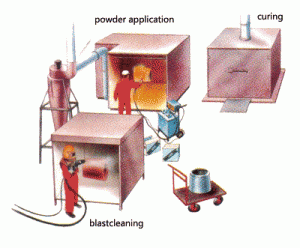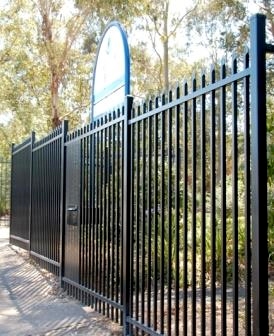About Star Powder Coating
Star Powder Coating is a
local company that has been in business for over two decades providing
high quality powder coating services to small and large commercial
customers. We provide a high quality professional finish to metal that
is affordable. Our goal is to provide professional quality and
efficient powder coating services, for projects of all sizes, to
industry and the public with friendly, competent and reliable service.
What is Powder Coating?
Powder coating is a type of coating that is applied as a free-flowing,
dry powder. The main difference between a conventional liquid paint
and a powder coating is that the powder coating does not require a
solvent to keep the binder and filler parts in a liquid suspension
form. The coating is typically applied electro statically and is then
cured under heat to allow it to flow and form a "skin". The powder may
be a thermoplastic or a thermo set polymer. It is usually used to
create a hard finish that is tougher than conventional paint. Powder
coating is mainly used for coating of metals, aluminium extrusions, and
automobile and bicycle parts.
Powder Coating Process involves three basic steps:
1. Part preparation or the pre-treatment = Removal of oil, soil,
lubrication greases, metal oxides, welding scales etc. is essential
prior to the powder coating process. It can be done by a variety of
chemical and mechanical methods. The selection of the method depends
on the size and the material of the part to be powder coated, the type
of soil to be removed and the performance requirement of the finished
product.
2. The powder application - The most common way of applying the powder
coating to metal objects is to spray the powder using an electrostatic
gun, or corona gun. The gun imparts a positive electric charge on the
powder, which is then sprayed towards the grounded object by
mechanical or compressed air spraying and then accelerated toward the
work piece by the powerful electrostatic charge.
3. Curing - When a thermo set powder is exposed to elevated
temperature, it begins to melt, flows out, and then chemically reacts
to form a higher molecular weight polymer in a network-like structure.
This cure process, called cross linking, requires a certain temperature
for a certain length of time in order to reach full cure and establish
the full film properties for which the material was designed. Normally
the powders cure at 200°C (390°F) for 10 minutes. The curing schedule
could vary according to the manufacturer's specifications. The
application of energy to the product to be cured can be accomplished
by convection cure ovens or infrared cure ovens. |


|

